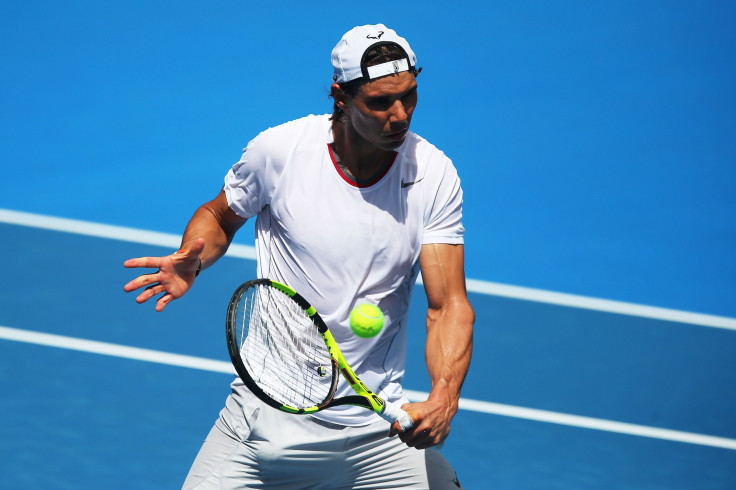Australian Open 2016: Predicting Rafael Nadal’s Chances Of Winning Tennis’ First Grand Slam Of The Year

Rafael Nadal will enter this year’s Australian Open in much better condition than he arrived at the first Grand Slam of the tennis calendar 12 months ago. Yet will be fresh from a reality check that made clear the enormous challenge that still lies in front of him if he is to land another Grand Slam title Down Under.
When heading to Melbourne last year, Nadal was fresh from a string of injuries that decimated his second half of 2014. It was to prove to be a long road back during a year that turned into his worst since he broke through as a teenage Grand Slam champion over a decade ago. In recent months, though, there have been plenty of signs that the worst is behind the 29-year-old and that he is set for a much improved 2016.
Yet, while that may be true, competing once again for tennis’ biggest titles and actually getting back to the very top are two very different things. That is especially true when the current world No. 1 is as dominant as Novak Djokovic is right now.
Nadal went into last week’s Qatar Open final in fine form, playing with a renewed aggression from the back of the court. He had optimistic, but not farfetched hopes of ending a run of four consecutive defeats to Djokovic. The 10-time Grand Slam champion even started well, earning a break point in the opening game. But then the Serbian began to take command, playing at a level even he, winner of three Grand Slams last year, had rarely reached. In the end, Nadal won just three games, despite playing far from a terrible match. Still, he spoke with optimism afterward, expressing his hope that Djokovic wouldn’t always be able to play at a level he described as the best he had ever seen.
“We will see during the whole season,” he said, according to the ATP Tour website. “Today, he's better than me. We will see in two weeks or we will see in five months. The only thing that you can do is wait that the opponent is not playing like this all the time. That is difficult to play like this all the time. It's obvious. I am going to wait for my moment.”
Nadal also made it clear that it would be unhealthy to simply focus on Djokovic. And, to a large extent, he is right. For Nadal, the first challenge going into the Australian Open, which gets underway next Monday, is simply getting back to the latter stages of a Grand Slam. Not only was last year the first since 2004 in which he failed to win a Grand Slam, but he didn’t even make it to a single semifinal.
Nadal’s current ranking does not help with that goal. He will be seeded No. 5 in Melbourne, meaning he could well have to play one of Djokovic, Andy Murray, Roger Federer or Stan Wawrinka in the quarterfinals. Well beaten in the quarterfinals of the Australian Open last year, in 2014 he made it all the way through to the final, only to suffer an injury and painful loss to Wawrinka. That was one of two finals Nadal has lost in Melbourne, having also been beaten by Djokovic in the longest Grand Slam final in history in 2012.
Beating Djokovic on his favorite surface and at what has been his most successful Grand Slam, winning it five times, could well be too high a hurdle for Nadal to overcome at this point. Yet if he can get a win over one of the top four and earn a semifinal or even final place, it would mark real progress on the way back. Encouragement for the season ahead could also come by continuing to embrace the more aggressive style he showcased in Doha. Rather than simply getting back to his previous level, assistant coach Francis Roig has suggested that there could be a new and improved Nadal in 2016.
“The game today is very different from four years ago,” he said. “Now, the start of a sequence of play is vital and if you hit a bad second serve, you tighten up and right from the first ball you have lost the initiative.
“You have to adapt to what the good players are doing and, as he’s very good himself, we thought he could adapt and change certain aspects of his game and I think he is doing that. Now I see him play and know that he can win the point in many more ways. Without losing his basics of playing one more shot, but also without retreating and letting the ball drop.”
© Copyright IBTimes 2025. All rights reserved.





















